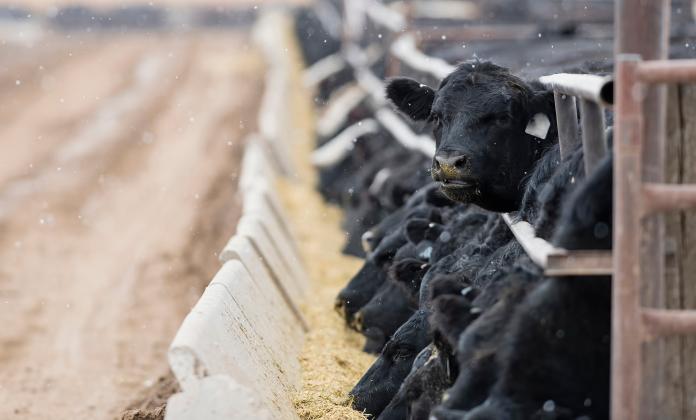Justin Waggoner, K-State Research and Extension Beef Systems Specialist
The fall can be an exceptionally challenging time of year to start calves on feed, regardless if calves are home raised, weaned calves, or newly received calves in a commercial feedyard. Successfully managing newly weaned or received calves and the process of adapting cattle to growing and finishing diets are important components of managing cattle that ultimately affect cattle performance for the remainder of the feeding period. What does a typical industry receiving protocol look like and how does the cattle feeding industry transition cattle to a finishing diet? A recent survey of consulting nutritionists conducted by Samuelson et al., (2016), which summarized responses from twenty‐four consulting nutritionists (servicing more than 14,000,000 head annually) reported that 66% of the feed yards they service allow cattle to rest 12 to 24 hours prior to initial processing and nearly 30% allow cattle to rest more than 24 hours. The majority of the consulting nutritionists (64%) suggested that cattle should be provided access to hay for four days after arrival. Approximately 56% of the nutritionists surveyed used multiple step‐up diets with an average forage concentration of 40.7% roughage. On average four transition diets were used with diets being fed for 6 days before moving to the next diet. Thus, cattle on average are transitioned to the finishing diet within 24 days of feeding the first step‐up diet. Alternatively, approximately 40% of the nutritionists utilize a 2‐ration blending program to adapt cattle (effectively a starter and finisher diet). Those that used a 2‐ration program recommended 38% roughage in the starter ration and cattle adapted to the finishing diet within approximately 27 days.
For more information, please contact the local K-State Research and Extension Office.
K-State Research and Extension is an equal opportunity provider and employer.

